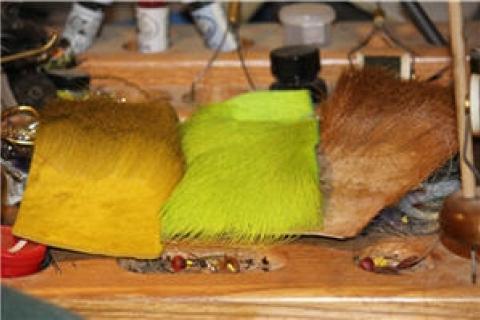
The uses for deer hair in fly tying are almost endless. Spinning, stacking and layering deer hair are just a few instances where the quality of the hair can spell the difference between good flies and bad art projects. Following are three factors to consider when buying a patch of deer hair that will make learning to tie with deer hair easier and help you create flies that fish can’t resist.
 |
| When it comes to deer hair for fly tying, make sure the patch you buy is high quality, clean and consistent in color. |
How to Judge Deer Hair Quality
First and foremost to consider is deer hair quality. Not all deer hair patches for sale are equal. Deer hair can be coarse or fine and long or short (depending on where on the animal it comes from). If you are going to be spinning and clipping the hair short, then size and length are not a factor. If you plan on tying delicate or small patterns where the hair will need to be stacked, then the finer the hair you use, the better. It is a lot easier to align the tips and tie down fine deer hair (without splaying it wildly) than trying to work with coarse/ large deer hair.
Tie One On With Clean Hair
The cleanliness of deer hair is another consideration that the fly tier must keep in mind. While most store bought materials are usually pretty clean, I still recommend inspecting the hides for dirt, debris or bugs. Introducing bugs to you fly-tying materials can be disastrous and costly. If you do see bugs either get rid of the materials immediately or put them in the freezer for a few weeks to try and kill off the intruders.
Consistent Color From Root to Tip
Color is another factor that anglers should be thinking about when looking to purchase deer hair. It’s not a big deal when you are picking out hair in naturals tones but when it comes to dyed materials, take a good look at the quality of the dye process. You want the deer hair to be dyed evenly across the patch of material and throughout the entire length of the hair. If you are seeing blotchiness or darker spots on the hair you plan on buying, keep searching for a better patch. You don’t want to start tying flies and then waste time trying to match the deer hair. Maybe it’s not a big deal from the fish’s perspective, but if you are going to spend the time tying flies you want to be able to get consistent results.
Deer hair is one of those special items that every fly tyer needs to be familiar with. Inspecting the materials before you buy them and finding a product with consistent quality will ensure you tie the best flies possible.
![]() Check out this article to learn the secret to catching more river trout on a fly rod at Bass Pro 1Source.
Check out this article to learn the secret to catching more river trout on a fly rod at Bass Pro 1Source.
- 6799 views

